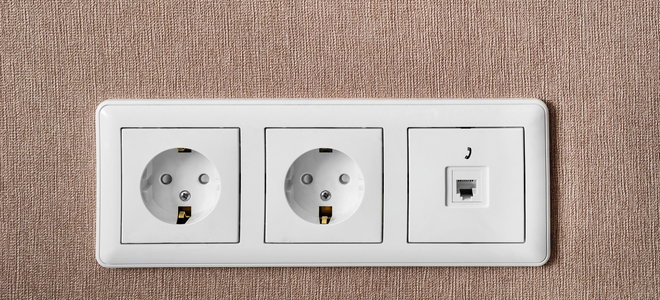How to Test a Phone Line With an Analog Voltmeter

- 0.5-1
•
- Intermediate
•
- 20-200
Even in the age of smartphones, it can still be important to have a working landline. If you're having problems but don't have a phone line tester, an analog voltmeter can be used to to perform some rudimentary tests. This handy step-by-step guide will show you how!
Note: If you are having a problem with a phone line, try switching out phones to make sure that the phone itself is not the culprit. This should be the first thing you try whenever you can't get a dial tone or the tone is intermittent.
Test to See if Your Lines Are Connected to the Telephone Company
Step 1 - Locate the Main Junction Box
First, go the network interface box that is mounted somewhere on the outside of your home and locate the line wiring inside.
Step 2 - Test Incoming Telephone Line Voltage
In order to check if you are connected to the telephone company, you don't need to unplug anything or loosen any wire screws. Instead, just set your voltmeter to "volts" or "VDC" and touch the black probe lead to the red wire inside the box. Likewise, touch the red probe lead to the green wire.
Your voltmeter should display a low voltage reading of around 45 to 48 mV. If it does, then your lines are properly connected to the telephone company. However, if there is no voltage reading displayed, or if it is zero, then your lines are not getting a signal from the telephone company at all.
Testing Internal Wiring for Continuity
Step 1 - Disconnect Wiring
Go the network interface box outside your home and disconnect the plug (inside the outside junction box) for the line that is not working. If you only have one line, there should be only one plug that has colored wires attached to it. Remove the short plug wire, and then go back inside and removes the line plugs from all phones that share the line.
After you are no longer connected to the telephone company, you can test your internal wiring for continuity.
Step 2 - Set Your Voltmeter to Test Continuity
Follow the directions that came with your voltmeter for setting it to test for continuity or an open circuit.
Step 3 - Understand Continuity
If wired correctly, each colored wire in the line should be totally independent of the others. So, none of the colored wires should ever touch each other. You can use the continuity test function of your voltmeter to confirm that no two wires are coming into contact.
A wire that has continuity will allow electricity to flow freely through the length of the wire without obstruction. However, two bare wires that are touching each other also have continuity. Since the wires should never touch, continuity indicates a problem in this case.
Step 4 - Test the Wiring
Use the screwdriver to open a terminal plug box (where you plug-in your phone). Then, place the leads on any two wires. If the voltmeter indicates that there is continuity, you have a problem with your home's internal wiring and will need to repair it.




